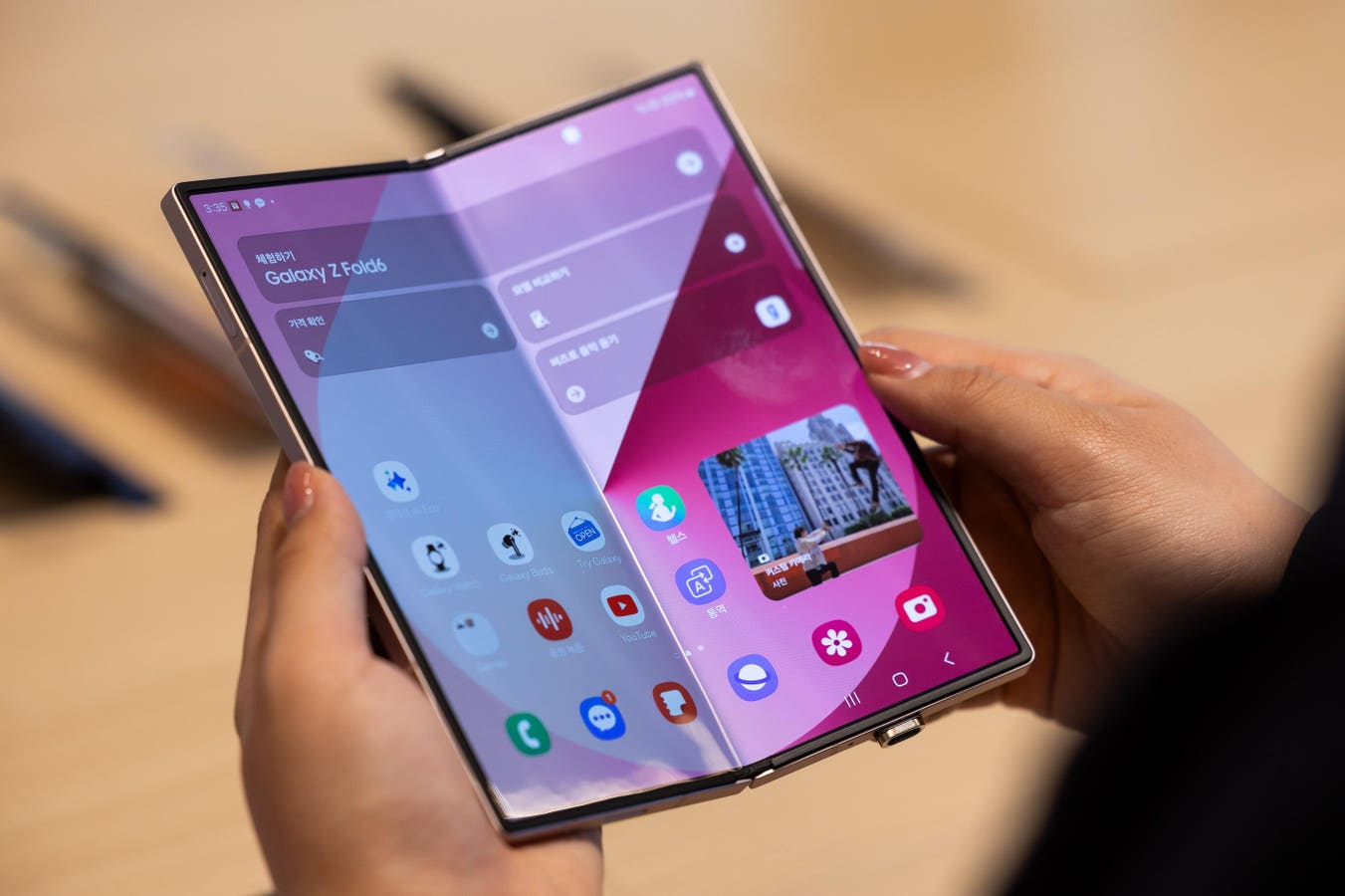Presenter talking at AI neuroscience forum bringing together IT professionals, showing EEH headset demonstration of latest developments in artificial intelligence mind transfer, camera B
getty
From the sundrenched stages of LA Tech week to the uplifting halls of AFROTECH, a powerful energy is sweeping across the globe. Tech conferences, meetups, and innovation weeks are no longer niche gatherings for tech bros, coders or venture capitalist. These gatherings have become major economic events showcasing culture and technology.
Now that artificial intelligence is supercharging everything from autonomous vehicles to urban planning, these gatherings are more influential than ever before, they are essentially shaping the future of mobility. But as these conferences boom a critical question emerges; who are they really for, and whose voices are missing from the room?
At their best these events are powerful engines of progress. For entrepreneurs with a groundbreaking idea for an AI powered logistics platform it is an unparalleled opportunity to meet an investor who can turn their dream into reality. For a software engineer it might be a chance to learn about new machine-learning models directly from the people who are creating them. And for cities, hosting these events translates into an economic explosion, solidifying their desired reputation to be a hub for innovation, attracting talent and investment.
The primary beneficiaries of these conferences seem clear. Startups and founders get access to capital, potential partners and even media exposure. Investors have an opportunity for curated environments to discover promising new ventures and also to spot burnishing market trends. If you are a tech professional these conferences are an opportunity to network, get some career development and possibly build a skill. As for corporations it is a unique venue to scout for acquisitions, new talent or disruptive technologies that eventually can reshape industries. In the mobility world what this means is that the team who is developing a safer sensor for self-driving cars has the ability to connect with a major automaker. This would accelerate development and deployment in a way that would be impossible if they were only connecting through emails and zoom calls. It is undeniable that there is a sort of magic that occurs in some of these tech conferences.
However this vibrant ecosystem does have significant blind spots. The most immediate barrier is cost. Tickets often run in the thousands, not including travel and lodging. According to their websites APTA Mobility Conference is $2775 for non-members, www.s6.goeshow.com/apta/mc/2025/register_now.cfm. Manifest is $2,095 for early-bird, www.manife.st, and TRB (transportation research board annual meeting) onsite up until January 9th is $910 for one day, www.trb-annual-meeting.nationalacademies.org/registration. Too often critical stakeholders are priced out before they even have an opportunity to be a part of the agenda. This “velvet rope” of sorts, creates an exclusive atmosphere where innovation is discussed primarily by those who can afford a seat at the table. It leads to a more profound problem: the “echo chamber”. At least with Urban Autonomy Smmit the events are free to those leaders working in the Autonomous Vehicle industry.
HOUSTON, TEXAS – NOVEMBER 14: Will “will.i.am” Adams, Founder and CEO of FYI and Frank Holland, Anchor CNBC attend AfroTech Conference 2024 – Day Two at George R. Brown Convention Center on November 14, 2024 in Houston, Texas. (Photo by Robin L Marshall/Getty Images for AfroTech)
Getty Images for AfroTech
When the same groups of people dominate the panels, keynotes and networking events it results in a narrow set of priorities and perspectives being amplified. The voices that are often left out are local community members, public sector and transit workers, nonprofits and advocacy groups. This “exclusive” environment creates serious consequences. The people whose neighborhoods will serve as a testbed for delivery drones, ai-controlled traffic systems or autonomous shuttles are rarely in the room. Organizations who would represent the disability community, institutional knowledge from transit drivers, and elderly groups are often completely unaware of these tech gatherings that will eventually have real impact on their lives.
The dynamic surrounding public acceptance of new technology, particularly with AI, is fragile. When a company develops a product in a vacuum and then “unveils” it to a community it is often met with suspicion and sometimes resistance. The idea of “build it and they will come” is a fantasy. People want to know: why weren’t we consulted about this new innovation, is this actually going to solve a problem that I have, does these create new issues or is this technology for technology sake?
Effective community engagement is not a press release or a flashy demo day. It is a sustained two way dialogue. Tech conferences often represent a massive missed opportunity to foster this dialogue. Instead of being exclusively focused on pitching to investors these conferences could dedicate significant programming to engaging the public. Imagine a track in a major mobility conference with residents interacting with developers and perhaps co-designing an update of an app, or a town hall with city officials and tech CEOs publicly debating ethical guidelines for deploying AI traffic solutions.
As to the young professional, how can they afford to attend these conferences? With student loans and increasing rental costs, it’s enough for them to just get by. The uber expensive conference leaves out the significant voice of the recent college graduate, armed with the latest education and probably when they are most open-minded. These new entrants to the working world have bright ideas with fresh eyes for the mobility challenges of today and tomorrow. Without a reduced-cost option and tracks that include their voice, the industry suffers for lack of their representation.
Sadly, by failing to include these diverse voices, the tech industry risks designing a future that serves few at the expense of many. It risks creating “smart cities” that are efficient but not equitable and transportation systems that are technologically advanced, but socially disconnected.
Ultimately these global tech gatherings are at a crossroads. They can continue to be exclusive and high cost, accelerating innovation in a bubble, or they can evolve. But if they intentionally lower barriers to entry and create genuine platforms for community dialogue, they can become something far more powerful; a place where a truly inclusive intelligent and human-centered future is built, together
Transportation is mobility and mobility is freedom™









